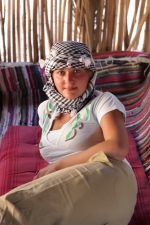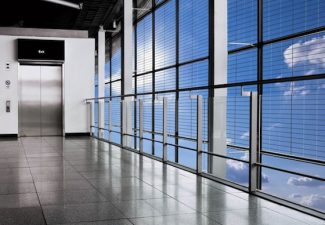 Climatology models applied to urban planning could yield greener cities.
Climatology models applied to urban planning could yield greener cities.
If you have ever walked down the street in a city full of high rises and felt a sudden blast of cold air, or witnessed a swirling mass of dried leaves, chances are you experienced an artificial microclimate created by the surrounding buildings. It turns out that when planning sustainable cities, it is crucial to consider the spaces between each building, since they impact one another in very interesting ways. This according to Evyatar Erell, a professor of architecture at Israel’s Ben-Gurion University of the Negev.
Professor Erell’s experience with applying climatology to city-planning hearkens back to 1986, when he joined the team to develop the first Israeli settlement that deliberately designed its own microclimate.
Situated in the fierce Negev desert, where temperatures reach both high and low extremes, the Neve Zin settlement was designed to keep homes cool during summers and warm during winters. And it was necessary to ensure that no houses shadowed another, thereby compromising that home’s ability to make passive use of the sun’s warmth.
South-facing windows allowed the low winter sun to penetrate, while the summer sun was blocked out with blinds. High vine-covered concrete walls kept pedestrians shaded, and windy roads kept car speed, and therefore dust, to a minimum. It is this kind of planning, according to Erell, that is required in urban environments.
Tall buildings on narrow streets create their own microclimate by blocking out the sun, and creating wind vortices. This not only generates blasts of either hot or cold air, but also traps pollutants since there isn’t enough airflow to carry them off the street and into the atmosphere. It’s likely that the air quality around the towering Burj Dubai is not so great.
But shorter buildings on wide streets can facilitate better airflow and transport city pollutants. And energy efficiency is likely to be better if towering buildings aren’t blocking other buildings’ ability to harness the sun’s energy.
According to Physics Central, Erell is the lead author of a new book, “Urban Microclimate: Designing the Spaces Between Buildings”, that shows how to apply climatology to create greener, more livable cities. He believes that modeling is the key to greener cities.
Recently Singapore decided to renovate Clarke Quay, a warehouse district. By applying mathematical modeling and climatology to their planning, the developers were able to properly size and space every new construction to ensure the optimum microclimate. The result is a comfortable environment, despite lack of air conditioning. A little bit of mathematics can go a long way.
More on Green Building in the Middle East:
Foster & Partners Finish Gorgeous Green Building in Morocco
Bring Moshe Safdie’s Green Building to the Middle East
Emirates Green Building Council: You Don’t Have to be Rich To Build Green
image via Joi




I would really like to see planning agencies and energy related companies working more closely together. Siemens for example launched a totally new campaign in the US only recently: http://www.usa.siemens.com/sustainablecities/index.html Why could they not have a workshop for politicians for example?!